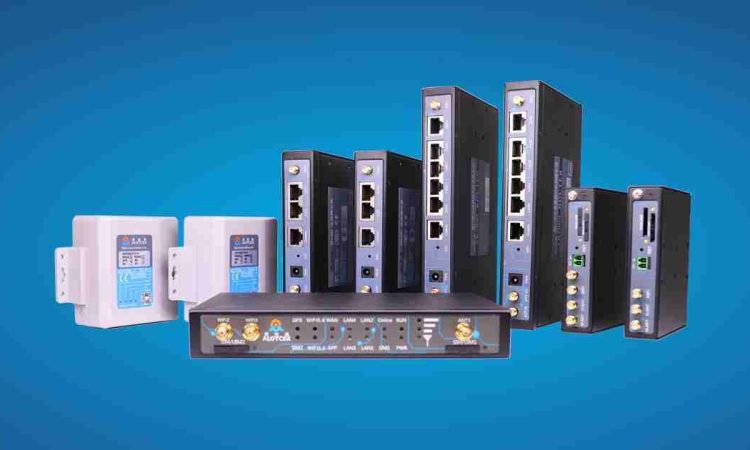
At a glance, both industrial and consumer 5G routers perform the same basic function: they connect devices to a 5g router sim network. However, this superficial similarity belies a profound difference in their design philosophy, capabilities, and total cost of ownership. Choosing a consumer device for an industrial application is a recipe for failure, while deploying an industrial router at home is significant overkill. Understanding these distinctions is critical for selecting the right tool for the environment. Here are the top 10 detailed differences between industrial and consumer-grade 5G routers.
1. Environmental Hardening and Operating Temperatures
The Difference: Consumer routers are built for climate-controlled homes and offices, while industrial routers are engineered to survive in harsh, unpredictable conditions.
The Details: A consumer router typically operates in a comfortable 0°C to 40°C range. An industrial router, housed in a fanless, metal enclosure, is built to withstand extreme temperatures, commonly from -30°C to 75°C. This allows it to function reliably in a freezing warehouse, a scorching solar farm, or an outdoor traffic cabinet. Furthermore, industrial routers boast high IP (Ingress Protection) ratings, such as IP65, making them dust-tight and resistant to water jets, which is essential for wash-down environments in food processing or exposure to the elements.
2. Hardware Reliability and Mean Time Between Failures (MTBF)
The Difference: Industrial routers are designed for continuous, uninterrupted operation over many years, whereas consumer devices have a shorter expected lifespan and lower reliability.
The Details: Industrial applications demand 24/7/365 uptime. A failure can halt a production line or disable a critical monitoring system. Industrial routers use higher-grade, industrial-temperature-rated components and are subjected to more rigorous testing. They are characterized by a high Mean Time Between Failures (MTBF), often measured in hundreds of thousands of hours. Consumer routers use commercial-grade components and are not designed for the constant workload and electrical stress of industrial environments, leading to a higher probability of failure.
3. Advanced Cellular Connectivity and Redundancy
The Difference: Industrial routers offer sophisticated cellular features focused on reliability, while consumer routers focus on simplicity and cost.
The Details: A consumer router typically has a single SIM card slot. An industrial router almost always features dual SIM slots from different mobile carriers, supporting automatic failover. If the primary network fails, the switchover is seamless and instantaneous. Many industrial models also support advanced features like steered roaming and IMSI switching to always find the best available signal. This multi-carrier redundancy is a core requirement for mission-critical applications where a dropped connection is not an option.
4. Power Supply Flexibility and Robustness
The Difference: Consumer routers require stable AC power, while industrial routers accept a wide range of often unstable DC power sources.
The Details: A consumer router plugs into a standard 110/240V AC wall outlet. Industrial environments frequently use DC power from a control panel, a vehicle (12/24 VDC), or a solar-powered system. Industrial routers support a wide-range DC input (e.g., 9-60 VDC), which provides resilience against voltage sags, surges, and polarity reversal. This flexibility is essential for deployment in vehicles, remote sites, and anywhere stable AC power is unavailable.
5. Security Features and Certifications
The Difference: Industrial routers provide layered, enterprise-grade security for critical infrastructure, while consumer routers offer basic protection for home networks.
The Details: A consumer router has a basic firewall. An industrial router is a security appliance. It includes a stateful firewall, deep packet inspection, and hardware-accelerated VPN support (IPsec, OpenVPN, WireGuard) to create encrypted tunnels for all data. For regulated industries, industrial routers often carry certifications like IEC 62443, proving they are designed to protect operational technology (OT) networks from sophisticated cyber-physical threats. Consumer devices lack these rigorous security postures.
6. Management and Monitoring Capabilities
The Difference: Industrial routers are designed for centralized management of large fleets, while consumer routers are managed one-by-one via a simple web interface.
The Details: Managing one home router is easy; managing 500 routers across a state is impossible with consumer gear. Industrial routers support protocols like TR-069 and SNMP for integration into centralized cloud management platforms. This allows for remote configuration, bulk firmware updates, real-time performance monitoring, and instant alerting for any device in the fleet. This centralized control is vital for maintaining security and operational efficiency at scale.
7. Interface and Integration Versatility
The Difference: Industrial routers come with specialized ports to connect directly to industrial equipment, which consumer routers completely lack.
The Details: The industrial world runs on legacy protocols and digital signals. Industrial routers are equipped with digital I/O (Input/Output) and serial ports (RS232/485). These allow the router to directly interface with PLCs, sensors, and gauges. A digital input can monitor a door sensor; a serial port can read data from a flow meter. This turns the router into an all-in-one gateway and protocol converter, eliminating the need for additional hardware.
8. Long-Term Availability and Product Lifecycle
The Difference: Industrial routers are guaranteed to be available and supported for many years, while consumer models have a short lifecycle.
The Details: An industrial automation system may be in service for 10-20 years. Consumer router models are often discontinued and replaced within 1-2 years. Industrial router manufacturers commit to product longevity programs, guaranteeing the availability of the same model and spare parts for a decade or more. This prevents a costly and disruptive “rip-and-replace” scenario mid-way through an industrial project’s life.
9. Precision Timing via GNSS and Built-in GPS
The Difference: Industrial routers often include a high-sensitivity GNSS receiver for location and timing, a feature absent in most consumer routers.
The Details: For mobile assets (e.g., in transit or logistics) or for systems requiring precise time synchronization, a built-in GNSS (Global Navigation Satellite System) receiver is essential. It provides accurate geolocation for tracking and, crucially, serves as a highly accurate time source via NTP or PTP for time-stamping data and synchronizing processes across a distributed network, such as in power utilities or financial trading.
10. Software Features and Edge Computing
The Difference: Industrial router software is built for customization and intelligence at the edge, far surpassing the static firmware of consumer devices.
The Details: Consumer router firmware is static and user-friendly. Industrial routers often run on a customizable Linux OS and support edge computing. This allows users to run custom Python scripts, Node-RED flows, or even Docker containers directly on the router. This enables data processing, protocol conversion, and local decision-making at the source, reducing latency and cloud data costs—a capability far beyond the scope of any consumer router.
Conclusion
The divide between industrial and consumer 5g outdoor router is not merely one of degree, but of fundamental purpose. The consumer router is an appliance designed for convenience and low cost in a benign setting. The industrial router is a rugged, reliable, and secure component of a mission-critical system, engineered to operate at the edge under duress. Its higher initial cost is justified by a vastly lower total cost of ownership, preventing catastrophic downtime and securing vital infrastructure. When the stability of your operations is on the line, the robust, feature-rich nature of an industrial 5G router is not a luxury—it is a necessity.
